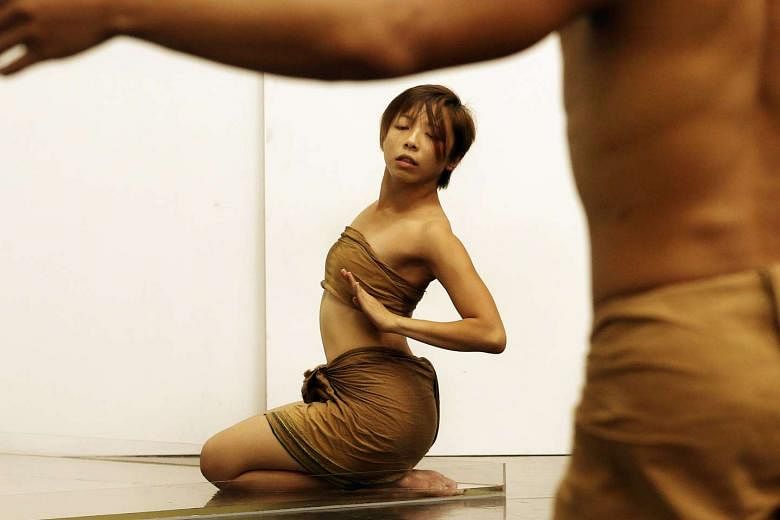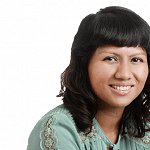Independent dance artist Kiran Kumar's latest work, Archipelago Archives Exhibit #3: If I Could Set With The Sun, is not a typical performance.
The audience can shuttle freely between two rooms, which are two halves of a larger space.
In one, warm lights reveal a lone dancer moving slowly in a shallow pool of water, seemingly in a meditative state. In the other area, a looped silent video plays in a dark room, showing scenes from parts of India and Indonesia, accompanied by narrative text.
The result resembles something like a visual-arts exhibition that "talks about the ritualistic aspect of dance", says Kumar, 33.
The work is commissioned as part of dance company Raw Moves' annual Research & Development platform.
Company dancers Jeryl Lee, 26, and Matthew Goh, 24, will take turns to perform in the marathon three-hour sessions, which take place from June 9 to 11 at Goodman Arts Centre's container blocks in Block O.
Tickets, at $20, can be used for multiple entries during each session and on all three days. Raw Moves is also offering a $25.50 ticket bundle, which includes entry to its next show, RawGround, on July 14 and 15.
-
BOOK IT / ARCHIPELAGO ARCHIVES EXHIBIT #3: IF I COULD SET WITH THE SUN
-
WHERE: Multi-purpose Studios 1 & 2, Block O, Goodman Arts Centre, 90 Goodman Road
WHEN: June 9 and 10, 1 to 4pm and 7 to 10pm; June 11, 1 to 4pm
ADMISSION: $20 or $25.50 bundle price with RawGround. Tickets to Archipelago Archives Exhibit #3 allow for multiple entries across all three days. Go to research-clutter. peatix.com.
Archipelago Archives Exhibit #3 is part of a larger research project undertaken by Berlin-based Kumar, who was born in Bangalore.
The first part of the project is an essay performance that will take place in December in Berlin, Germany, while the second part is an ongoing video work.
"It's looking at the intersection of dance - working in a studio-based setting - and ethnographic research, which involves going out and doing fieldwork," he says.
In particular, he examined ritual dances from three areas - the Kalinga empire region in eastern India (present-day Orissa), the Kaveri delta region (present-day Tamil Nadu in India) and the Srivijaya empire region (present-day Central Java in Indonesia).
Using this research, he reinvented a dance from an imagined archipelago that lies somewhere between India and Indonesia.
"The techniques we are using are not conventional dance techniques. We are going more into movement meditation," says Kumar, who is trained in Odissi, a classical dance form from Orissa.
He put Lee and Goh through at least two hours of yoga practice each morning to help them slow their breath and soften their gaze.
"The first yoga session was painful. We had to kneel and be aware of our body for a really long time," says Lee. "We had to find ways, through breathing, for example, to calm ourselves."
The trio travelled to Solo, Indonesia, for a week to observe how traditional Javanese dance is practised. They even did yoga in abandoned temples on mountains.
Goh says: "We observed things that influenced us subconsciously. For example, sometimes when we're walking, we start to imitate how the dancers move or feel the wind from the mountain on our bodies. These kinds of experiences help us when we're exploring."
Kumar says he is treating the work as an "experiment", one which will not end after the performance.
In fact, Raw Moves artistic director Ricky Sim, 46, says the project with Kumar can potentially run for at least two years.
He says: "Can durational work be stretched beyond a one-off presentation into a longer research process to uncover a deeper meaning? That is the challenge I am setting for the company."


